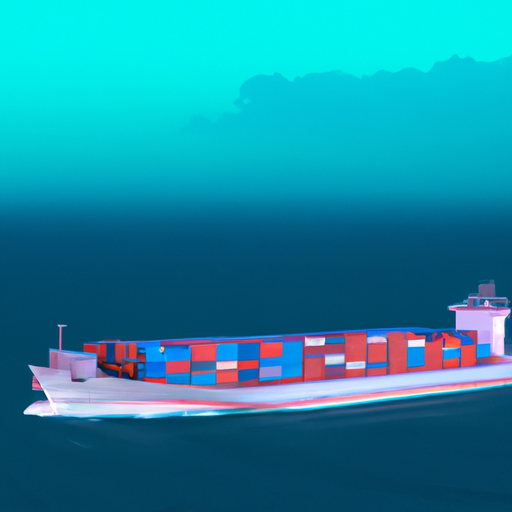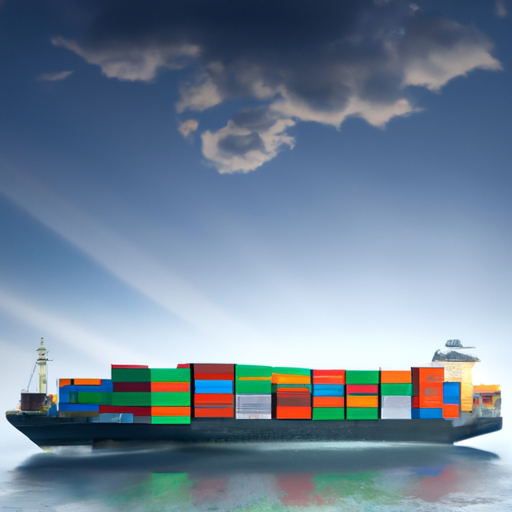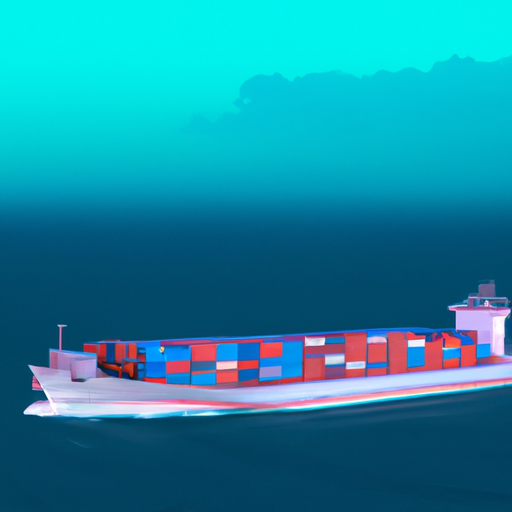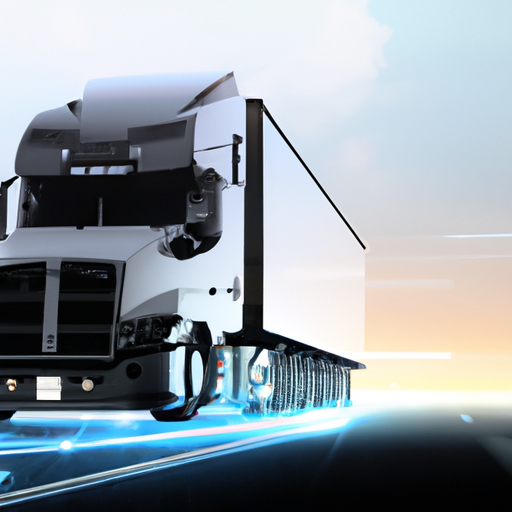Logistics Industry Trends
In this article, you will explore the latest developments in the logistics industry. From the incorporation of advanced technologies to the growing importance of sustainability, the industry is undergoing a transformation. We will delve into the emerging trends, such as the rise of e-commerce and the shift towards automation, and how they are reshaping the way goods and services are transported, stored, and delivered. Get ready to gain insights into the dynamic landscape of the logistics industry and discover the key factors driving its evolution.

Table of Contents
1. Integration of Technology
In today’s rapidly evolving world, the integration of technology has become increasingly crucial for the logistics industry. Advancements in automation and robotics, the Internet of Things (IoT), artificial intelligence (AI), and blockchain are revolutionizing the way logistics operations are carried out.
1.1 Automation and Robotics
Automation and robotics have become indispensable tools in the logistics industry. From automated fulfillment centers to robotic picking and packing systems, these technologies have significantly increased efficiency and productivity. Automation reduces the need for manual labor, ultimately saving time and costs. With the help of robotics, tasks that were once time-consuming and labor-intensive can now be completed quickly and accurately.
1.2 Internet of Things (IoT)
The Internet of Things (IoT) is transforming the logistics industry by connecting various devices and systems. IoT enables real-time tracking and monitoring of shipments, ensuring greater visibility and improved supply chain efficiency. Sensors embedded in products provide valuable data such as location, temperature, and humidity, allowing logistics professionals to make informed decisions and optimize their operations.
1.3 Artificial Intelligence (AI)
Artificial Intelligence (AI) is revolutionizing logistics with its ability to analyze vast amounts of data and make predictions. AI-powered systems can automate complex tasks such as demand forecasting, route optimization, and inventory management. By leveraging AI, logistics companies can streamline their operations, reduce costs, and enhance customer satisfaction.
1.4 Blockchain
Blockchain technology offers unprecedented transparency and security in the logistics industry. With its decentralized and immutable nature, blockchain enables secure and tamper-proof transactions, making it ideal for supply chain management. By using blockchain, logistics companies can enhance traceability, reduce fraud, and speed up processes such as customs clearance and payment settlements.
2. Sustainability and Green Logistics
As the world becomes increasingly conscious of environmental issues, sustainability and green logistics have gained significant importance in the industry. Logistics companies are actively adopting strategies to minimize their impact on the environment and promote eco-friendly practices.
2.1 Adoption of Electric Vehicles
One of the key strategies for reducing carbon emissions in logistics is the adoption of electric vehicles (EVs). Electric trucks and vans offer a cleaner and more sustainable alternative to traditional diesel-powered vehicles. With advancements in battery technology, EVs are now capable of longer ranges and faster charging times, making them a viable option for logistics operations.
2.2 Renewable Energy Sources
Logistics companies are also embracing renewable energy sources to power their operations. Solar panels and wind turbines are being installed in distribution centers and warehouses to generate clean and sustainable energy. This not only reduces CO2 emissions but also helps companies save on energy costs in the long run.
2.3 Eco-friendly Packaging
Eco-friendly packaging solutions are becoming increasingly popular in the logistics industry. Companies are shifting towards sustainable materials such as biodegradable plastics, recycled paper, and compostable materials. By adopting eco-friendly packaging practices, logistics companies can minimize waste generation and contribute to a greener and more sustainable future.
2.4 Carbon Footprint Reduction
Reducing the carbon footprint is a top priority for logistics companies. Through various initiatives such as optimizing transportation routes, implementing efficient warehouse management systems, and consolidating shipments, companies can minimize their overall greenhouse gas emissions. The use of alternative fuels and the optimization of logistics networks also play a significant role in reducing carbon footprints.

3. Supply Chain Visibility
Supply chain visibility is crucial for effective logistics management. By having real-time insights into the movement of goods, companies can make informed decisions, optimize processes, and meet customer expectations.
3.1 Real-time Tracking and Tracing
Real-time tracking and tracing systems enable logistics professionals to monitor shipments at every stage of the supply chain. By leveraging technologies such as GPS, RFID, and barcodes, companies can track the exact location and status of their goods. This enhances operational efficiency, improves customer service, and reduces the risk of lost or stolen shipments.
3.2 IoT Sensors and RFID Technology
IoT sensors and RFID (Radio Frequency Identification) technology are key enablers of supply chain visibility. These technologies provide real-time data on various aspects such as temperature, humidity, and product condition. By leveraging IoT and RFID, logistics companies can proactively identify potential issues, optimize inventory levels, and ensure the integrity of sensitive goods such as pharmaceuticals and perishable items.
3.3 Predictive Analytics
Predictive analytics uses historical data and advanced algorithms to forecast future events and trends. By analyzing past performance and patterns, logistics companies can make accurate predictions about demand, transportation delays, and potential disruptions. This enables proactive decision-making and helps companies stay one step ahead in their supply chain operations.
3.4 Cloud-based Solutions
Cloud-based solutions play a crucial role in supply chain visibility. Cloud platforms provide a centralized repository for data, allowing multiple stakeholders to access and share information in real-time. Cloud solutions also enable seamless integration of various systems and applications, ensuring efficient communication and collaboration across the supply chain.
4. E-commerce and Last-Mile Delivery
The rise of e-commerce has transformed the logistics landscape, placing a significant emphasis on last-mile delivery. Companies are adapting their strategies to meet the growing demands of online retail and provide seamless delivery experiences to customers.
4.1 Rise of Online Retail
The increasing popularity of online retail has led to a surge in demand for logistics services. E-commerce companies are partnering with logistics providers to ensure smooth order fulfillment and timely delivery. As a result, logistics companies are investing in technologies and processes that streamline e-commerce operations and enhance the overall customer experience.
4.2 Urban Warehousing and Micro-Fulfillment Centers
To meet the demands of quick and efficient last-mile delivery, logistics companies are setting up urban warehousing facilities and micro-fulfillment centers in densely populated areas. These smaller, strategically located facilities enable faster order processing and delivery to customers in urban areas. By reducing the distance between warehouses and end consumers, companies can optimize delivery routes and minimize transportation costs.
4.3 Same-Day and Next-Day Delivery
Prompt delivery has become a key differentiator in the e-commerce industry. Customers now expect fast and reliable same-day or next-day delivery options. To meet these expectations, logistics companies are implementing advanced routing and scheduling algorithms, optimizing their delivery networks, and leveraging technologies such as autonomous vehicles and drones for faster and more efficient deliveries.
4.4 Delivery Drones and Self-Driving Vehicles
Delivery drones and self-driving vehicles are emerging technologies that have the potential to revolutionize last-mile delivery. Drones can quickly and autonomously transport lightweight packages to customers, bypassing traffic congestion and reducing delivery times. Self-driving vehicles, on the other hand, offer the prospect of cost-effective and efficient deliveries without the need for human drivers. These technologies are still in their early stages, but they hold promising possibilities for the future of logistics.

5. Globalization and Trade
Globalization and trade have profound impacts on the logistics industry. As companies expand their operations globally, they face challenges and opportunities related to cross-border e-commerce, changing tariff and trade policies, trade facilitation, and emerging markets.
5.1 Cross-border E-commerce
Cross-border e-commerce is on the rise, presenting logistics companies with new challenges and opportunities. As customers increasingly purchase goods from overseas, logistics companies need to navigate complex customs processes, international shipping regulations, and varying customer expectations. Successful logistics operations in cross-border e-commerce require efficient customs clearance, reliable transportation networks, and seamless communication between stakeholders.
5.2 Tariff and Trade Policy Changes
Tariff and trade policy changes have a significant impact on logistics operations. Shifts in trade agreements, trade wars, and regional trade blocs can lead to disruptions in supply chains and changes in sourcing strategies. Logistics companies must closely monitor trade policy developments and adapt their operations accordingly to mitigate risks and leverage opportunities.
5.3 Trade Facilitation and Customs Modernization
Trade facilitation and customs modernization initiatives aim to streamline international trade processes and reduce barriers. Logistics companies can benefit from initiatives such as single window systems, harmonized customs procedures, and digitalization of trade documents. These measures simplify customs clearance processes, reduce transit times, and enhance supply chain efficiency.
5.4 Emerging Markets
Emerging markets offer significant growth opportunities for the logistics industry. As developing economies continue to expand and urbanize, the demand for efficient logistics services increases. Logistics companies need to develop market-specific strategies and tap into the potential of these emerging markets. By understanding the unique challenges and opportunities presented by each market, companies can establish a strong presence and gain a competitive edge.
6. Talent Management and Workforce Development
Automation and technological advancements in logistics have caused shifts in the industry’s workforce requirements. To thrive in the evolving landscape, logistics companies need to focus on talent management, job displacement, skills development, and succession planning.
6.1 Automation and Job Displacement
The integration of automation and robotics in logistics operations has caused concerns about job displacement. While some routine tasks may be automated, the industry still requires skilled professionals to manage and oversee these technologies. Logistics companies must invest in retraining and upskilling programs to ensure that their workforce remains relevant and capable of handling advanced technologies.
6.2 Need for Skilled Professionals
As the logistics industry embraces new technologies, the demand for skilled professionals continues to rise. Companies need individuals with expertise in data analytics, AI, supply chain management, and cybersecurity – among other specialized fields. Attracting and retaining these skilled professionals is crucial for maintaining a competitive edge and driving innovation.
6.3 Training and Upskilling Programs
To meet the demand for skilled professionals, logistics companies are investing in training and upskilling programs for their employees. These programs may include courses in emerging technologies, supply chain management principles, leadership development, and other relevant skills. By providing ongoing training opportunities, companies can empower their workforce and ensure their ability to adapt to changing industry demands.
6.4 Talent Retention and Succession Planning
Talent retention and succession planning are essential for building a sustainable workforce in the logistics industry. Companies must create a positive work environment, offer competitive compensation packages, and provide opportunities for career growth. Succession planning ensures that key positions are filled by qualified individuals, preventing disruptions in operations and fostering long-term organizational success.

7. Risk Management and Resilience
The logistics industry is exposed to various risks, including supply chain disruptions, cybersecurity threats, and natural disasters. To minimize the impact of these risks and ensure business continuity, logistics companies need to develop robust risk management and resilience strategies.
7.1 Supply Chain Disruptions
Supply chain disruptions can occur due to various factors such as extreme weather events, political instability, or technological failures. Logistics companies need to develop contingency plans, establish alternative routes and suppliers, and implement risk mitigation strategies such as buffer stock or safety stock. By proactively addressing potential disruptions, companies can minimize their impact and maintain a resilient supply chain.
7.2 Cybersecurity Threats
The increasing reliance on technology makes the logistics industry susceptible to cybersecurity threats. Data breaches and cyber-attacks can disrupt operations, compromise sensitive information, and damage reputation. Logistics companies must invest in robust cybersecurity measures, including firewalls, encryption, regular system audits, and employee training. By implementing cybersecurity best practices, companies can protect their data and ensure the integrity of their operations.
7.3 Business Continuity Planning
Business continuity planning is vital for logistics companies to effectively respond to unforeseen events and minimize downtime. Companies should develop comprehensive business continuity plans that outline procedures for various scenarios such as natural disasters, pandemics, and system failures. These plans should include backup systems, alternative communication channels, and clear roles and responsibilities for key personnel.
7.4 Reshoring and Nearshoring Strategies
In light of recent global disruptions, such as the COVID-19 pandemic, logistics companies are reevaluating their sourcing strategies. Reshoring and nearshoring have gained attention as companies aim to reduce dependence on distant suppliers and mitigate risks. These strategies involve bringing production closer to the home market or sourcing from neighboring countries. By adopting reshoring and nearshoring strategies, companies can enhance supply chain resilience and reduce vulnerability to disruptions.
8. Collaboration and Partnerships
Collaboration and partnerships play a vital role in the logistics industry as companies seek to leverage each other’s strengths, drive innovation, and enhance customer service.
8.1 Integration of Logistics Providers
Logistics providers are increasingly integrating their services to offer end-to-end solutions to customers. Collaborative efforts between freight forwarders, warehouse operators, and transport providers can create a seamless supply chain experience. By integrating their operations and leveraging each other’s expertise, logistics providers can offer comprehensive solutions that meet the evolving needs of their customers.
8.2 Collaboration with Startups and Tech Companies
Collaborating with startups and tech companies is an effective way for logistics companies to stay at the forefront of technological advancements. Startups bring fresh ideas and innovative solutions to the table, while tech companies offer expertise and access to advanced technologies. By partnering with these entities, logistics companies can foster innovation, explore new business models, and gain a competitive edge.
8.3 Supplier Relationship Management
Effective supplier relationship management is crucial for optimizing supply chain operations. Logistics companies must build strong relationships with their suppliers to ensure timely and reliable deliveries. Close collaboration and effective communication enable logistics companies to anticipate changes in demand, manage inventory levels, and mitigate the risk of disruptions.
8.4 Coopetition
Coopetition, a combination of cooperation and competition, is an emerging trend in the logistics industry. Competitors collaborate with each other to achieve common goals, such as sharing transportation networks or pooling resources. Coopetition enables companies to reduce costs, increase efficiency, and offer enhanced services to their customers. By working together, logistics companies can unlock new opportunities and overcome industry challenges.
9. Customer Expectations and Experience
In the era of digitalization, customer expectations have evolved, and the logistics industry needs to adapt to meet these changing demands. Providing personalized delivery options, maintaining transparency and communication, and optimizing returns and reverse logistics are essential for enhancing the overall customer experience.
9.1 Personalized Delivery Options
Customers today expect flexibility in their delivery options. From choosing specific time slots to alternative delivery locations, logistics companies must provide personalized options that cater to individual preferences. By offering a range of delivery choices, companies can enhance customer satisfaction and loyalty.
9.2 Transparency and Communication
Transparency and communication are crucial for building trust with customers. Logistics companies should provide real-time tracking updates, timely notifications about delivery status, and proactive communication in case of any issues or delays. By keeping customers informed every step of the way, companies can generate confidence and foster long-lasting relationships.
9.3 Efficient Returns and Reverse Logistics
Dealing with returns and reverse logistics can be a complex process, but it is a critical aspect of customer experience. Logistics companies need to streamline their returns processes, making it easy for customers to initiate returns and receive timely refunds or replacements. Efficient reverse logistics operations can reduce the cost and impact of returns while enhancing customer satisfaction.
9.4 Omni-channel Retailing
The rise of omni-channel retailing has blurred the lines between online and offline shopping. Customers expect a seamless shopping experience across various channels, whether they are making purchases online, in-store, or through mobile apps. Logistics companies must adapt their operations to support omni-channel retailing, ensuring that inventory is accurately and efficiently managed across different sales channels.
10. Data Analytics and Business Intelligence
Data analytics and business intelligence have become indispensable tools for logistics companies. By harnessing the power of data, companies can make data-driven decisions, optimize their operations, and gain a competitive edge.
10.1 Predictive Demand Forecasting
Predictive demand forecasting uses historical data, market trends, and advanced algorithms to accurately forecast customer demand. By analyzing patterns and external factors, logistics companies can optimize inventory levels, plan procurement, and allocate resources effectively. Predictive demand forecasting minimizes the risk of stockouts or excess inventory, resulting in cost savings and improved customer satisfaction.
10.2 Route Optimization and Load Consolidation
Route optimization and load consolidation are key areas where data analytics can significantly impact logistics operations. By analyzing data on shipping volumes, vehicle capacities, and traffic conditions, companies can optimize delivery routes and minimize transportation costs. Load consolidation helps maximize truck capacity, reducing the number of vehicles on the road and further optimizing transportation operations.
10.3 Warehouse Management Optimization
Data analytics enables warehouse management optimization by providing insights into inventory levels, order volumes, and storage capacities. By analyzing this data, logistics companies can optimize warehouse layouts, minimize product handling, and improve order picking and packing processes. This results in reduced labor costs, increased productivity, and faster order fulfillment.
10.4 Supply Chain Simulation and Scenario Planning
Supply chain simulation and scenario planning use data analytics to model and optimize supply chain operations. By simulating various scenarios and analyzing the potential impacts, logistics companies can identify bottlenecks, evaluate risks, and devise strategies to mitigate disruptions. Supply chain simulation enables companies to proactively plan and prepare for uncertainties, ensuring business continuity and resilience.
In conclusion, the logistics industry is undergoing a significant transformation driven by the integration of technology, sustainability and green initiatives, supply chain visibility, e-commerce growth, globalization and trade, talent management, risk management, collaboration, customer expectations, and data analytics. Embracing these trends is crucial for logistics companies to stay competitive, adapt to evolving industry dynamics, and meet the changing demands of customers. By leveraging these trends, the logistics industry can achieve enhanced efficiency, improved sustainability, and superior customer experiences.






